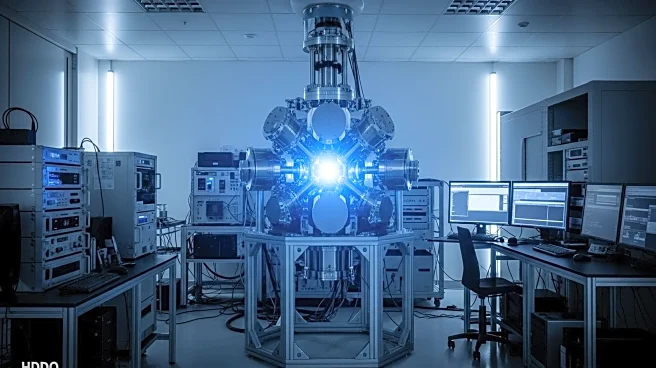What's Happening?
Researchers have developed a new superconducting nanowire single-photon detector (SNSPD) to capture dark matter particles, which constitute about 80% of the universe's mass. This detector is sensitive to lower-energy events, allowing scientists to probe dark matter particles across a wide mass range below one mega electron volt (MeV). The device uses superconducting microwires to maximize its cross-section and has a thin, planar geometry to detect directional changes, which can help filter out non-dark-matter events. The development marks a significant advancement in the search for dark matter, as previous experiments have not succeeded in directly detecting these particles.
Why It's Important?
The development of this new detector is crucial for advancing our understanding of dark matter, a substance that plays a significant role in the universe's structure and composition. By enabling the detection of dark matter particles with smaller masses, the SNSPD could provide insights into the fundamental nature of the universe and potentially lead to breakthroughs in physics and cosmology. The ability to detect directional changes in dark matter particles could also refine existing models and theories, offering a more comprehensive understanding of cosmic phenomena.
What's Next?
Further technological improvements to the SNSPD are planned, which could enhance its sensitivity to even smaller dark matter particles. Researchers aim to deploy the system underground to shield it from other sources of radiation, potentially increasing the accuracy of dark matter detection. These advancements could pave the way for new discoveries in astrophysics and cosmology, as scientists continue to explore the elusive nature of dark matter.













